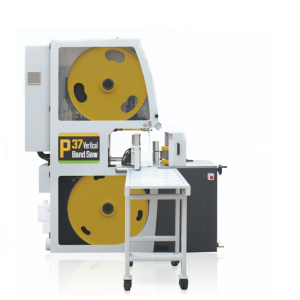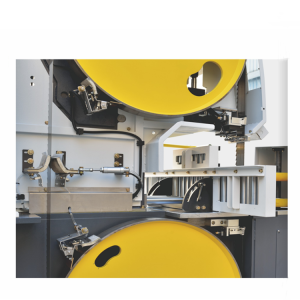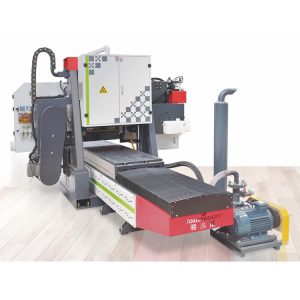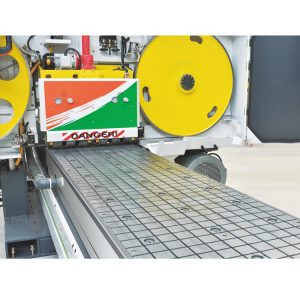Vertical and horizontal sawmill are different types of sawmill, but both are used to process wood to achieve a variety of end results. Choosing the right bandsaw sawmill depends on factors such as needs, features, and fit.
But many new woodworkers may not know the difference between the two and which bandsaw sawmill to choose when starting their woodworking projects. Today, we will briefly analyze the differences between the two in various aspects.
Horizontal bandsaws are usually used to cut large workpieces. Its size gives it the ability and capacity for such work; in larger models, it can also use a computer console to automate the cutting work.
Vertical bandsaws are usually smaller in size and are usually used to cut small wood and more flexible materials. They are common in small shops and homes, and the lumber industry is also known for its extensive use of vertical bandsaws; because it is an obvious choice for small and medium-sized sawmills and woodworking enthusiasts.
Whether using a horizontal or vertical bandsaw sawmill, it is important to consider your ultimate needs. Knowing the difference between the two and matching your woodworking project needs, you can choose a “working partner” that meets your expectations.
Cutting Results
Vertical sawmill are great for contour cutting, and they are able to cut some complex angles and shapes, while horizontal bandsaws are typically used for large-scale cutting applications and are not as suitable for cutting curves or complex patterns and shapes.
Vertical bandsaws have many uses: contour cutting, filing, polishing, and simple stock cutting. It is considered more versatile than horizontal bandsaws and is favored by hobbyists and small commercial fabricators – in other words, if there are no huge production requirements, vertical bandsaws are ideal.
But this does not mean that large woodworking shops that do a lot of cutting should not consider buying a vertical saw. Its unique features and contour cutting aspects will come in handy from time to time, so it is still something worth considering.
Cutting Efficiency
Cutting efficiency is a key consideration for a shop’s capabilities from an output perspective. Horizontal bandsaws are set up to cut materials to the required length and at any desired angle, and they require a lot of power; vertical saws require less power to make continuous cuts.
Because vertical bandsaws are ideal for resawing – a process you almost have to see to believe – this makes them particularly capable and efficient. They require less power and excel at continuous cuts with endless blades.
Safety & Stabilitate
The bandsaw in a horizontal bandsaw machine holds the workpiece in place while the blade moves back and forth. The horizontal bandsaw configuration is helpful for cutting long materials. Vertical bandsaws require the operator to move the material toward the blade to make the cut. Horizontal bandsaws are generally safer than vertical bandsaws because the operator does not have to touch the cutting surface.
For stability in cutting, both are comparable: vertical saws can be clamped on both sides of the cut to provide more material stability during the cut, while horizontal bandsaws use rollers to hold the cut material in place. On vertical saws, the blade rotates around the miter or datum point, while on horizontal bandsaws, the saw arm swings out of the clamp when mitering.
Maneuverability
Ease of operation is also a very important consideration when choosing a machine. This is what we call maneuverability.
Vertical vertical bandsaws are front loaded, while horizontal machines are front and/or rear loaded depending on the model. How easy and quick the material is to load and unload from the saw machine depends on the shop layout, loading method (crane or forklift), and cutting application.
în plus, it is also important to consider the material flow of the workshop and the location of the machine for processing operations. Vertical bandsaws can be placed against the wall and loaded from the front, allowing the material to flow along the perimeter of the workshop floor.
From the above we can see that both types of bandsaws sawmill have great functions, and their performance varies, and the applicable scenarios and cutting effects are also unique.



